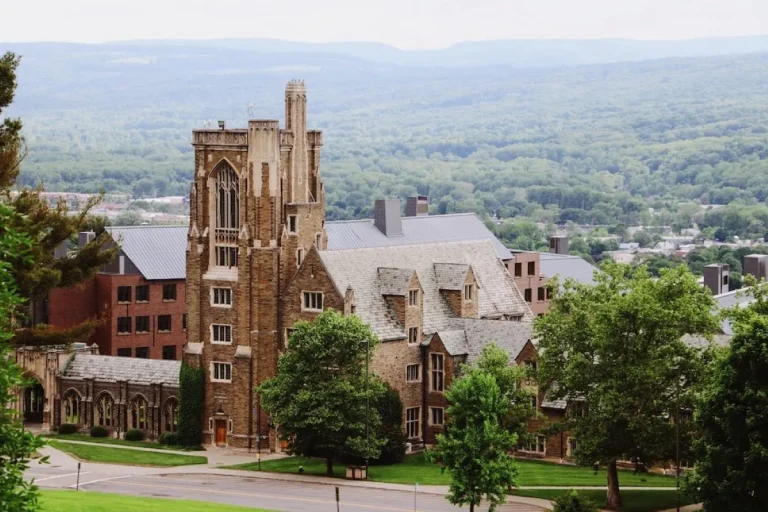What Grade Is Earth Science Typically Taken?
Earth Science provides students with insights into the planet we call home. But in what part of a student’s K-12 journey do they usually take this eye-opening course?
If you’re short on time, here’s a quick answer: Earth Science is most commonly taught in 6th, 7th, or 8th grade.
This article will provide an in-depth look at the typical grading and curriculum of Earth Science classes in U.S. schools.
Middle School Earth Science
Earth Science is typically taken by students in middle school, specifically in the 6th, 7th, or 8th grade. It is a core subject in many middle schools and is often included in the science curriculum.
6th-8th Grade Common
In most schools, Earth Science is a required course that students take during the middle school years. It is introduced at this level to provide students with a foundational understanding of the Earth’s systems, including geology, meteorology, and astronomy.
The curriculum for middle school Earth Science often covers topics such as plate tectonics, weather patterns, the solar system, and natural resources. Students may also learn about environmental issues and how human activities impact the Earth.
Sometimes an Integrated Science
While Earth Science is commonly taught as a standalone subject in middle school, some schools may integrate it with other branches of science. This approach, known as integrated science, allows students to explore connections between different scientific disciplines.
For example, an integrated science curriculum may incorporate aspects of Earth Science into units on biology or chemistry. This interdisciplinary approach helps students see how different scientific concepts are interconnected and can deepen their understanding of the natural world.
Establishes Base Knowledge
Studying Earth Science in middle school lays the foundation for further exploration of the subject in high school and beyond. It helps students develop critical thinking skills, scientific inquiry, and an appreciation for the Earth and its processes.
By learning about Earth Science at an early age, students gain a better understanding of the world around them and can make informed decisions regarding environmental issues. It also sets the stage for more advanced studies in areas such as geology, meteorology, and environmental science in the future.
For more information on middle school Earth Science curriculum, you can visit nextgenscience.org or nsta.org.
High School Earth Science
Earth science is a fascinating subject that encompasses the study of our planet, its processes, and the interactions between various Earth systems. While the specific grade at which Earth science is typically taken can vary depending on the school and educational system, it is most commonly offered as a high school course.
Less Common Except in Specific Programs
In some educational systems, Earth science may not be a mandatory course for all high school students. Instead, it may be offered as an elective or only included in specific programs or pathways. This is more commonly seen in schools that have a specialized focus on science, technology, engineering, and mathematics (STEM) education.
For example, in certain STEM-focused high schools or magnet programs, Earth science may be a required course due to its relevance to other scientific disciplines such as geology, meteorology, and environmental science.
These specialized programs often aim to provide students with a comprehensive understanding of Earth’s systems and their impact on the world around us.
Upper Grade Elective
In many high schools, Earth science is offered as an elective course that students can choose to take in their later years of high school. This allows students to explore the subject in more depth and gain a deeper understanding of Earth’s processes and phenomena.
As an elective, Earth science provides students with the opportunity to delve into topics such as plate tectonics, climate change, natural disasters, and the Earth’s geologic history. It can be a great choice for students who have a particular interest in the Earth sciences or who are considering pursuing related fields in college or beyond.
More Advanced Topics
For students who have a strong interest in Earth science and want to pursue more advanced topics, there are often opportunities to take higher-level courses in this subject. These courses may be offered as part of an advanced placement (AP) program or as honors courses.
Advanced Earth science courses delve into more complex concepts and may involve hands-on laboratory work, field trips, and research projects. Students may explore topics such as geological processes, climate modeling, seismology, and environmental sustainability.
These courses can provide a solid foundation for students interested in pursuing careers in geology, atmospheric science, environmental science, or related fields.
It is important to note that the availability of specific Earth science courses and the grade at which they are offered can vary between schools and educational systems. It is always best to consult with your school’s guidance counselor or science department to determine the specific options available to you.
For more information on high school Earth science curriculum and resources, you can visit reputable websites like National Science Teachers Association (NSTA) or Earth Science Week.
Major Topics Covered
Geology
Geology is one of the major topics covered in Earth Science. It is the study of the solid Earth, including rocks, minerals, and the processes that shape the Earth’s surface. In Earth Science courses, students will learn about the different types of rocks and how they are formed, as well as the forces that cause earthquakes and volcanic eruptions.
They will also explore the geological history of the Earth and how it has changed over millions of years. Understanding geology is crucial for understanding the formation of mountains, valleys, and other landforms, and how they impact the environment.
Oceanography
Oceanography is another important topic covered in Earth Science. It is the study of the oceans, including their physical and chemical properties, as well as the organisms that inhabit them. Students will learn about the different layers of the ocean, the currents that circulate within it, and the role that oceans play in regulating the Earth’s climate.
They will also explore the biodiversity of the oceans and the threats that they face, such as pollution and overfishing. Understanding oceanography is essential for understanding the interconnectedness of the Earth’s systems and the importance of protecting our oceans.
Meteorology
Meteorology is the study of the Earth’s atmosphere and the weather patterns that occur within it. In Earth Science courses, students will learn about the different layers of the atmosphere, the processes that drive weather phenomena like hurricanes and tornadoes, and how to interpret weather maps and forecasts.
They will also explore climate change and the impact that human activities have on the Earth’s climate system. Understanding meteorology is crucial for predicting and preparing for weather events, as well as understanding the larger patterns and trends in the Earth’s climate.
Astronomy
Astronomy is the study of celestial objects, including stars, planets, galaxies, and the universe as a whole. While it may not seem directly related to Earth Science, it is an important topic covered in many Earth Science courses.
Students will learn about the formation and evolution of stars, the structure of galaxies, and the origin and fate of the universe. They will also explore the Earth’s place in the solar system and the larger universe.
Understanding astronomy can provide a broader perspective on the Earth and our place in the cosmos.
Lab Activities and Projects
Lab activities and projects are an integral part of the Earth Science curriculum. They provide students with hands-on learning experiences, allowing them to apply the concepts they have learned in the classroom to real-world situations.
These activities not only enhance their understanding of Earth Science but also foster critical thinking, problem-solving, and teamwork skills.
Rock and Fossil Examination
One of the lab activities commonly included in Earth Science classes is the examination of rocks and fossils. Students get the opportunity to study different types of rocks, such as igneous, sedimentary, and metamorphic, and learn how they are formed.
They also examine fossils to understand the processes of fossilization and gain insights into Earth’s history.
Modeling Plate Tectonics
Another fascinating lab activity in Earth Science is the modeling of plate tectonics. Students create models to simulate the movement of tectonic plates and the resulting geological features, such as mountains, volcanoes, and earthquakes.
This hands-on approach helps students visualize and comprehend the dynamic nature of Earth’s crust.
Tracking Weather Patterns
Understanding weather patterns is a crucial aspect of Earth Science. Lab activities involving weather tracking allow students to analyze atmospheric conditions, such as temperature, humidity, and air pressure.
They use instruments like thermometers, barometers, and anemometers to collect data and interpret weather patterns. These activities provide practical knowledge and enhance students’ ability to forecast weather events.
Star Mapping
Studying celestial bodies and their movements is another area covered in Earth Science. Lab activities involving star mapping enable students to identify and locate constellations, stars, and other celestial objects.
They learn how to use star charts and telescopes to observe the night sky and understand the connection between Earth and the wider universe.
Conclusion
Earth Science typically first appears in middle school grades, providing students with engaging lessons on planets, weather, fossils, and more.
This important science forms the foundation for potential high school electives and college studies in Earth sciences.







